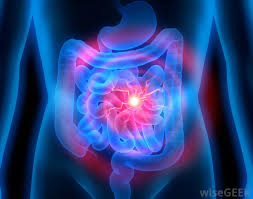Fructose Intolerance
What Is Fructose Intolerance?
Dietary fructose intolerance or fructose malabsorption is a digestive disorder that occurs when the small intestines cannot absorb a normal amount of fructose in the diet. While the average person has a limit on the amount of fructose they can comfortably digest in one sitting, a patient with dietary fructose intolerance has a much lower threshold. Excess, undigested fructose can ferment, irritating the intestines, altering the balance of bacteria, and causing a variety of unpleasant symptoms.

Signs and Symptoms
If you have fructose intolerance, you may experience a number of symptoms within half an hour to 2 hours of consuming foods that contain fructose. Your symptoms may include:
- Bloating
- Diarrhea or constipation
- Acid reflux
- Flatulence (passing gas)
- Muscle spasms in your abdomen (sharp stomach pains)
- Nausea or vomiting
Testing and Diagnosis
The test for fructose intolerance is very quick and easy to perform. We ask you to drink a soda (which contains high fructose corn syrup) 3 hours before you visit our office. Then, we have you breathe into a bag to evaluate the gases you exhale. This is called a Fructose Hydrogen Breath Test. It takes only 5 minutes to complete this procedure.
Typical Treatment
Dietary changes will help you manage your symptoms. Staying away from sweets is the first step, since sugary foods are usually high in fructose. Avoid foods that contain sweeteners including high fructose corn syrup, honey, agave nectar, and sorbitol (an artificial sweetener). You may also need to limit dried fruits along with certain fresh fruits and vegetables such as apples, grapes, watermelon, peas, and zucchini.
Additional Information
Overall, the symptoms for this condition are similar to those of irritable bowel syndrome, celiac disease, and other digestive disorders. It’s important to get tested to find out if you simply have fructose intolerance or if you are at risk for other, more serious illnesses.

